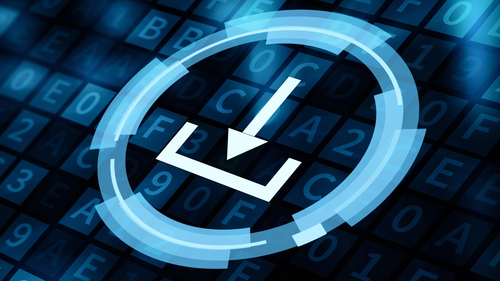Dui And Dwi Part 3 Pre-Trial Motions, Dui-Dwi Trials, And How It Works

Table of Contents
Fundamental FRAMEWORK OF A DUI OR DWI CASE: Pre-Trial Motions and Trial
Most DUI or DWI cases never make it to this progression in light of the fact that the charged takes a supplication deal, conceding blame in return for a lesser offense.
In any case, if a supplication deal can’t be come to, eventually the case will go to preliminary. The preliminary period of a criminal case is normally what a great many people know about from watching motion pictures or TV. In the criminal courts a jury of your friends will assess the proof against you and choose whether or not to convict you of the wrongdoing charged dependent on whether they are persuaded that you are liable, “past a sensible uncertainty.”
On the off chance that your DUI or DWI case makes it to preliminary, it will likely pursue a succession of seven stages which incorporate pre-preliminary movements, choosing jury individuals, opening proclamations, witness declaration and questioning, shutting contentions, jury guidance lastly, jury thought and decision.
PRE-TRIAL MOTIONS
These movements are typically contentions made by direction for one side or the other mentioning that the court limit their adversary from accomplishing something at preliminary. Pre-Trial movements incorporate solicitations to bar certain proof, to avert the utilization of specific observers, or to reject the case totally. Your lawyer could raise contentions that the breathalyzer test you took was defective, or that the cop that captured you looked you illicitly or addressed you without instructing you concerning your rights under Miranda. On the off chance that the police acted improperly or unlawfully in at any rate, this is an ideal opportunity to utilize their errors against them to prohibit government proof or potentially witnesses.
DUI/DWI TRIAL
Jury Selection
On your preliminary date, a “jury pool” is gathered from different arrangements of nearby inhabitants; these rundowns incorporate voter enrollments, DMV records and utility charging records. The objective in making the jury pool is to accomplish a reasonable cross area of the nearby populace. Along these lines, in the event that 40% of the populace is Latino, at that point around 40% of the jury pool ought to be Latino also. Be that as it may, the constitution just necessitates that the jury pool be delegate, not simply the jury. So in the situation above, it would not make any difference that just 30% of the genuine jury individuals were Latino, just that they were spoken to decently in the more extensive jury pool.
When the jury pool is gathered, the potential hearers are called under the steady gaze of the judge, the indictment and the barrier lawyer, who each inquiry them so as to decide if they are fit for preliminary. A definitive objective of this is to ensure that the member of the jury won’t be one-sided towards one side or the other. For instance, if the potential member of the jury had lost a kid in a mishap including an alcoholic driver, your lawyer would move to reject them from the board, since they would be unjustifiably one-sided against you.
Opening Statements
When the jury is chosen, the DUI/DWI preliminary can start. Opening proclamations is the point at which the lawyers are first permitted to address the legal hearers about your case.
Witness Testimony and Cross-Examination
This is the moment that the two sides bring out observers to talk about the episode before the judge and jury. On the off chance that the observer is exhibited by one side, the opposite side is normally permitted to “interrogate” them should they so pick. Interrogation just implies that the lawyer for the restricting party is scrutinizing your observer: the barrier questions any observer delivered by the indictment; the arraignment interviews any observer delivered by the safeguard.
Shutting Arguments
This is the place your legal counselor and the examiner each abridge their contentions and endeavor to persuade the jury that their side should win the case.
Jury Instructions
Jury directions are issued by the judge to the jury. They are typically a clarification of any material law that the jury should know to assess the realities and settle on a choice. In a DUI or DWI case the judge will most likely read the applicable state resolutions to the jury and clarify any terms that are not effectively comprehended by laymen (otherwise known as non-legal advisors).
Jury Deliberation and Verdict
This is the last piece of the DUI/DWI preliminary. The jury will be pardoned to a private region where they will examine your case among themselves without contribution from either side or from the judge. When they have gone to a choice, they, the judge and the gatherings will come back to the court where they will peruse their decision so anyone might hear to the court.

 Veganov Trichy: Revolutionizing Plant-Based Dining in South India
Veganov Trichy: Revolutionizing Plant-Based Dining in South India  Wheon.com Gta Vice City: Nostalgia Meets Modern Gaming
Wheon.com Gta Vice City: Nostalgia Meets Modern Gaming  Download Software Tgd170.fdm.97 New Release
Download Software Tgd170.fdm.97 New Release  Luxury Villas Provence le Collectionist
Luxury Villas Provence le Collectionist  Top Benefits of a Metal School Structure
Top Benefits of a Metal School Structure  Pedrovazpaulo Business Consultant: Expertise, Services & Impact
Pedrovazpaulo Business Consultant: Expertise, Services & Impact  How Acupuncture Can Help Support Fertility and Wellbeing
How Acupuncture Can Help Support Fertility and Wellbeing  Sciatica Relief Options on Long Island: A Comprehensive Guide
Sciatica Relief Options on Long Island: A Comprehensive Guide  Step-by-Step Guide to Cloning an Appealing Voice with AI for Promo Videos
Step-by-Step Guide to Cloning an Appealing Voice with AI for Promo Videos  How to Create Stunning Images for Social Media Promotion: A Guide for Small Businesses
How to Create Stunning Images for Social Media Promotion: A Guide for Small Businesses